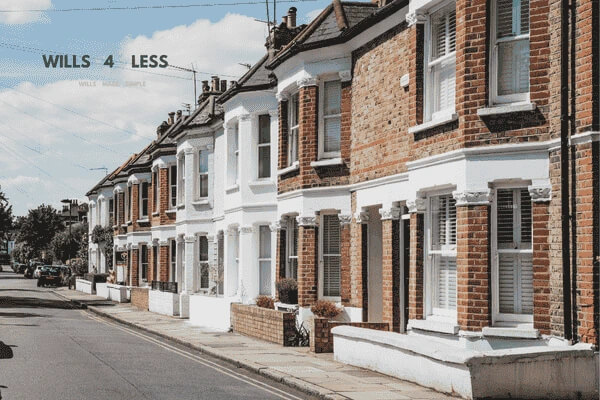
When you own two properties, the concept of Capital Gains Tax (CGT) becomes an essential topic. While the potential rewards of owning additional property are substantial, the tax implications are equally significant. In the UK, CGT applies to the profit made from selling a property that isn’t your primary residence. The goal of this article is to give you a clear understanding of CGT and its effects when you own multiple properties. Let’s dive in!
What Exactly Is Capital Gains Tax?
Capital Gains Tax is levied on the profit you make when you sell an asset. This applies to various assets, including property. In the UK, CGT is especially important when dealing with properties other than your main home. If you sell a second property, such as a holiday home or rental property, CGT applies to the profit made from the sale. In contrast, the sale of your main home often benefits from exemptions, which we’ll explore shortly. To gain a better understanding of how this works, Understanding Capital Gains Tax on Two Properties is essential for anyone involved in selling multiple properties.
Why does CGT exist? The purpose of CGT is to ensure that individuals and companies contribute fairly to the tax system based on the gains they make from increased asset values. In the property market, this tax also discourages speculative behaviors like tax avoidance.
Understanding CGT for Second Homes and Investment Properties
Owning multiple properties can complicate matters come tax season. Here’s a breakdown of how CGT works when you own two properties:
-
Main Home Exemption: Your main residence is usually exempt from CGT. However, this exemption doesn’t apply to your second property.
-
Taxable Profits: When you sell your second property, CGT applies to the profit you make, which is the difference between what you paid for it and what you sell it for, minus any allowable costs.
-
CGT Rates: The rates vary based on your income tax band. Basic-rate taxpayers are charged 18%, while higher-rate taxpayers pay 28% on the gains from property sales.
The Essentials of CGT Calculations
To calculate your CGT liability, there are a few things to keep in mind. The key figure here is the capital gain, which is determined by:
-
The Purchase Price – How much you paid for the property initially.
-
The Sale Price – The price you sell it for.
-
Deductible Expenses – Costs like estate agent fees, solicitor fees, and money spent on property improvements.
By deducting these expenses from your total profit, you reduce the amount that’s subject to CGT. Keep detailed records of every transaction and improvement you make to ensure you get the maximum benefit from these deductions.
Private Residence Relief and Its Role
At Wiils 4 Less, Private Residence Relief (PRR) is a game-changer for homeowners selling their primary residence. It allows you to avoid paying CGT on any profit made from selling your main home. But here’s the kicker: PRR doesn’t apply to your second home or any investment properties.
However, let's talk strategy—if your second home was once your main residence, you might qualify for some partial relief. Timing is everything, and understanding the rules surrounding PRR can save you a significant amount of money. Consulting with a tax advisor ensures you’re not missing any hidden exemptions.
The Annual Exemption Allowance
Every taxpayer receives an annual CGT exemption. For the 2023-24 tax year, this exemption is £6,000. If you sell multiple properties or assets, you can use this exemption for each asset. For married couples or civil partners, this amount can be doubled to £12,000.
The trick here is to make sure you use it— it's a "use it or lose it" allowance. If you don’t take advantage of it during the tax year, the exemption will expire.
The Role of Home Improvements and Selling Costs
Here’s a helpful tip: spend smartly on your property. Not only does this improve the living experience, but it can also reduce your CGT liability when you sell. Significant home improvements—like extensions or loft conversions—can be deducted from your taxable gains.
But regular maintenance costs? Sorry, those don’t count.
Don’t forget about selling costs. Fees paid to estate agents, solicitors, and for marketing the property can all be subtracted from your profit, lowering the taxable gain.
The Timing Dilemma: When to Pay CGT?
Timing can have a huge impact on how much tax you owe. You’re typically required to pay CGT within 60 days of selling the property. But some nuances can affect this deadline, so it’s vital to know the specific dates that apply to your situation.
For example, if you sell a property that is part of a trust or owned by a company, different deadlines could apply. Pro tip: Always consult a professional who can guide you through these deadlines to avoid penalties.
Special Considerations for Married Couples and Civil Partners
Here’s a potential tax-saving strategy for couples: combine allowances. Married couples and civil partners can pool their annual exemptions, which can double the exemption to £12,000 for the tax year.
Additionally, transferring property between spouses or civil partners can also lower CGT liability. This is often a tax-free transfer, making it easier to optimize both partners’ tax allowances.
The Hidden Impact of Gifting and Inheriting Property
Inheriting a second home or gifting property to someone else can introduce a whole new layer of CGT implications. When you inherit property, the acquisition cost is typically the market value at the time of the original owner’s death. If you later sell it, your CGT will be calculated based on the difference between the sale price and this new value.
Gifting property is a bit trickier. The person receiving the gift will assume the market value at the time of the transfer as the property’s acquisition cost. If they sell it later, they may be liable for CGT on any increase in value. As the giver, you might also face CGT depending on the market value at the time of the transfer.
Navigating Lettings Relief
Lettings Relief was once a major benefit for those renting out their homes, but significant changes took place in April 2020. Now, this relief is only available if you lived in the property with your tenant. If you rented out your second home entirely, you’ll likely no longer qualify for this relief. Back to Homepage
To avoid paying more CGT than necessary, keep track of the latest tax rules and consult a tax professional to ensure you’re making the most of available reliefs.
Knowledge Is Power
Owning two properties in the UK comes with its share of complexities—especially when it comes to taxes. By understanding the basics of Capital Gains Tax, calculating your taxable gains, and using the various allowances and reliefs available to you, you can significantly reduce your tax liabilities.
Remember, tax laws are not set in stone. They evolve, and staying informed is your best defense. Whether it’s understanding PRR, timing your property sales, or knowing what deductions are available to you, having a professional advisor on your side can make all the difference.
So, what’s your next move? Whether you’re planning to sell, transfer, or gift a property, planning ahead is key to navigating the labyrinth of Capital Gains Tax.
